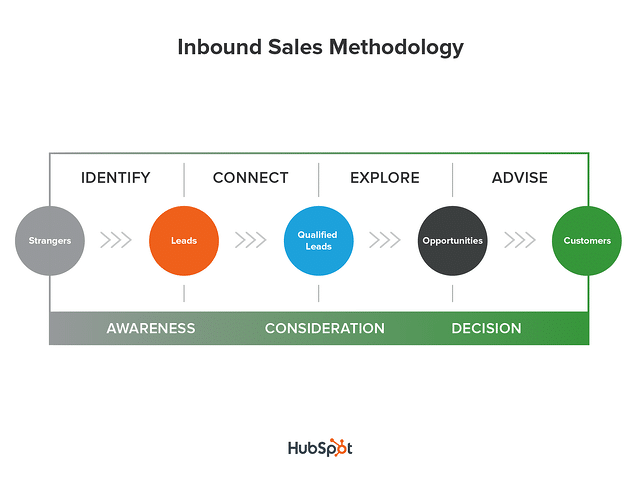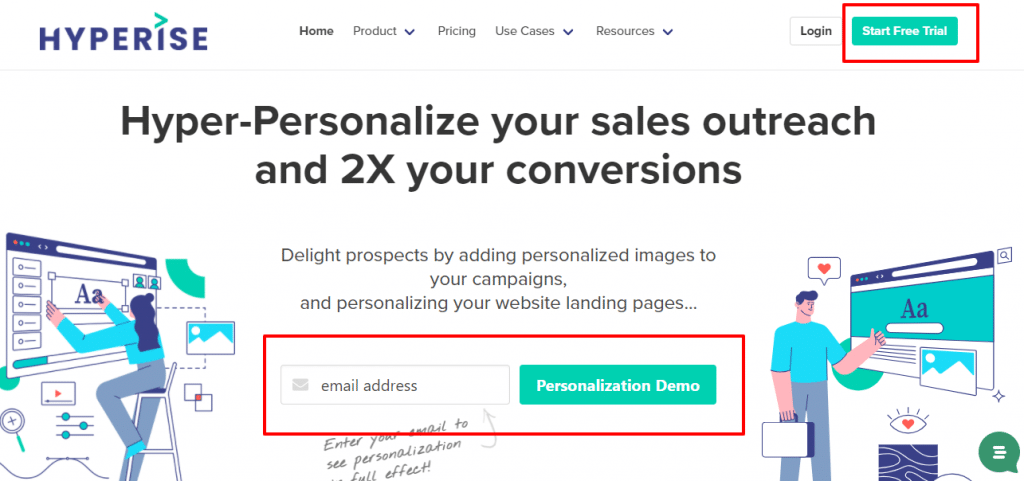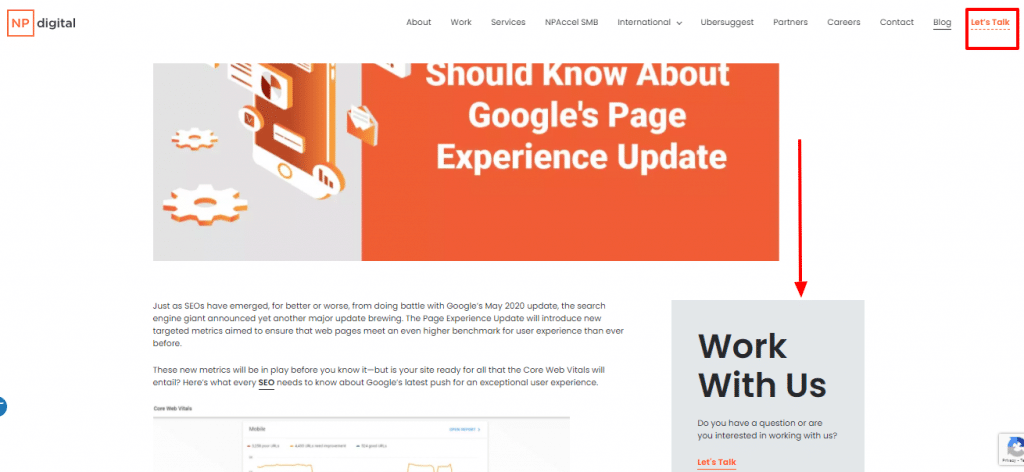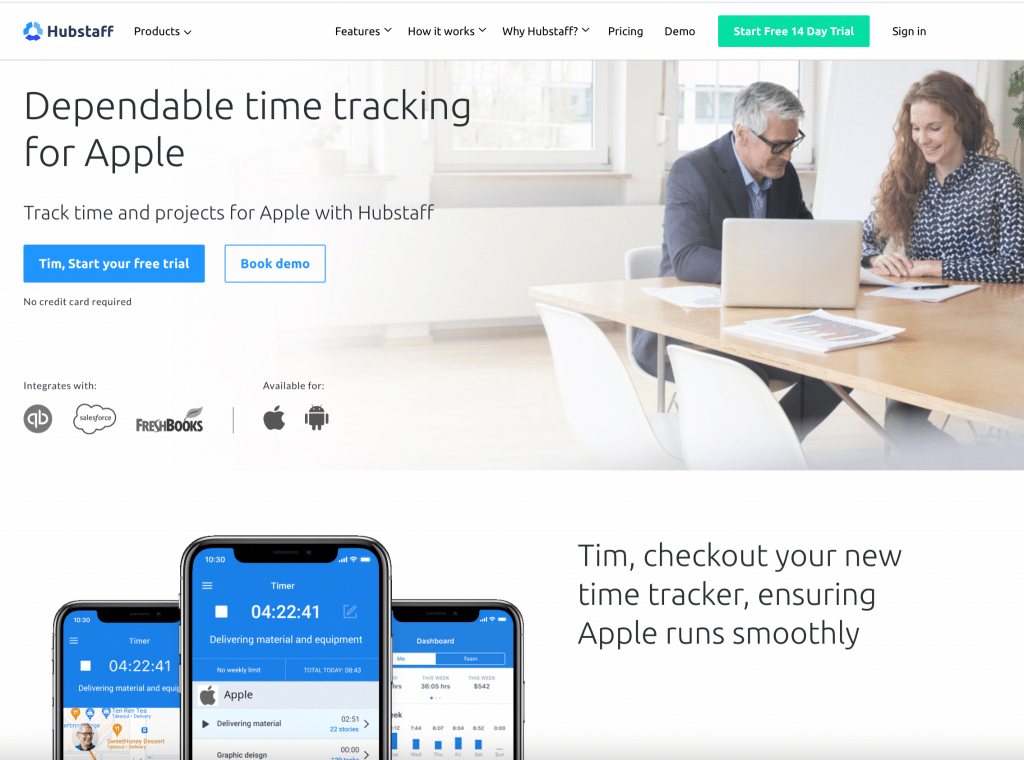For years, the main way to make sales involved invasive tactics. Typical examples include, among others, making cold calls, sending cold emails, and knocking on doors. This is called outbound sales.
Then customers realized they could be in control of the buying process by building relationships with brands they like. Of course, this meant brands had to switch tactics to attract, nurture, and convert leads.
Enter inbound sales.
The brands that have embraced the shift to inbound sales are killing it at driving business growth and sales.
What is inbound sales?
Inbound sales is a modern sales approach for selling that focuses on creating personalized experiences for people who have expressed interest in your product. Unlike traditional (outdated) sales tactics that focus on pushing products on consumers, inbound sales is more about turning the spotlight on the customer’s needs and how to fix them. Instead of pushing to make sales, inbound marketing is all about building relationships.
An overview of inbound sales methodology
So how does the typical inbound sales process work?
As the name suggests, inbound sales rely on nurturing relationships with prospects who have come to you and interacted with your brand. This can be anything from submitting their email address to interacting with you on social media to any other meaningful interaction. You can then leverage this interaction to initiate a conversation with your prospect. Of course, your conversation must be designed to be helpful to your prospect yet subtly promoting your product at the same time.
Remember, despite the fact that people love buying, no one likes being sold to. That’s exactly why you need an inbound sales strategy.
Outbound sales vs. inbound sales
Outbound sales vs. inbound sales — what’s the difference?
While both are sales strategies aimed at driving sales, the two approach the goal differently.
- Outbound sales. Sales representatives initiate the conversation by reaching out to potential buyers. This is usually through cold sales calls, cold emailing, or other prospecting methods.
- Inbound sales. Prospects initiate the conversation by reaching out to your sales team. This is usually in response to a blog post, webinar, newsletter, or email as a result of encountering one of your digital assets. Your inbound activities and sales reps then take over the conversation by nurturing leads down your funnel. To optimize your sales processes and improve lead engagement, explore the expert solutions offered by RevPilots here.
In short, inbound sales aims at bringing clients to you, instead of you going out to get them. This necessitates the need for a well-designed strategy to attract and take prospects down your sales funnel.
What is a typical inbound sales process?
Now that you know what inbound sales is and how it differs from outbound sales, let’s quickly look at what a typical inbound sales process looks like. But first, here’s an overview of what to expect (courtesy of Hubspot):

Identify your ideal prospects
One of the main reasons legacy sales systems are so ineffective is that they rarely take the time to research their ideal prospects. The result is a system that depends a lot on luck as sales reps would simply compile a list of potential prospects and either go through the list systematically or randomly.
With inbound sales, the process starts by identifying your ideal prospects. This involves gathering as much data as possible about brands or individuals that would benefit the most from your product or service. Examples of such data include:
- Demographic data
- Psychographic data
- Firmographic data
Once you’ve compiled said data, build profiles/personas to help you better understand your prospects.
Define your buyer’s journey
With so much information and options available to them, buyers have taken control of the buying process. That’s why the savvy sales leader will ditch the traditional sales tactics that don’t work and listen to their prospects. Listen to what your target audience wants and create a buying journey that will help you move them down your sales funnel.
This is your ideal buyer journey.
While this may be unique from brand to brand, there’s a framework that works for any brand in any industry:
Awareness
At this stage, buyers identify a pain point, challenge, or aspiration they want to achieve and consider whether it should be a priority or not. To better understand your prospects at this stage, you should research:
- How your prospects describe their pain points or aspirations.
- Where they go to learn more about said pain points and challenges.
- The factors that help buyers decide whether the challenge or goal should be a priority.
Understanding this will help you design top-of-the-funnel strategies that will attract and engage your target audience.
Consideration
At the consideration stage, buyers have clearly defined their challenge or aspiration and have committed to addressing it. The consideration stage involves researching different solutions and methods to do so. At this stage, you should research
- The categories of solutions buyers investigate.
- What buyers consider to be the best features/benefits of products in the category.
Decision
At this point of the buyer journey, the buyer is ready to settle on a solution and is investigating vendors. To better position yourself as the solution provider of choice, you should identify:
- The criteria buyers use to evaluate solution providers and products.
- What sets your solution apart from the competition.
- The decision-makers involved in making the final purchase decision.
This simple 3-step framework will help you understand how your prospects move through the steps involved in purchasing your product. It also helps you know how to strategically position yourself in a way that will make buyers come to you without you having to invasively enter their space.
Connect with your prospects
Today’s buyers are savvy. They research products before settling on their final choice. This is good as it provides you an opportunity to connect with buyers without being too pushy. With all the information available online, buyers have more knowledge about your product than you may think. Because of this, they don’t want a sales rep presenting the same information they already know. They’re looking for a personalized two-way relationship with a brand that can help them solve their problem. This is where it’s important to understand your buyer personas and plan the most effective way to connect with them. Common examples include:
- Live chat software
- Lead magnets
- Contact forms
- Email sequences
- Social media
- A phone call
Besides communication channels, you should also craft personalized messaging designed to nurture your prospects down your sales funnel.
Explore the best relationship opportunities
Just because a prospect has shown some interest in your brand or product doesn’t mean you can go for the jugular and hit them with your sales pitch.
You still need to ensure your prospect and product are a perfect match for each other. This is what the exploration stage is all about. It’s crucial as it will help you focus your time, energy, and resources on leads that have a higher chance of turning into customers. A few factors to help you “explore” the viability of your leads include:
- Does your product meet their needs? Focus on your lead’s problem and ask them to tell you about it in greater detail. This will enable you to either offer the perfect solution or discover if your product meets their needs.
- Do they have the budget? In your conversation with your prospect, be upfront about your pricing plans. At the end of the day, your bottom line matters, and your efforts should be focused on prospects that can afford your plans.
Once you’re satisfied that your leads are worth the effort, nudge them towards making a decision whether your solution is right for them. This brings us to the last stage in the inbound sales process.
Advise leads on the best solution for them
The final step in the inbound sales process is the “advise” stage. This is where you convince your prospects to buy your product. In a traditional sales setting, this would involve a generic presentation. But that doesn’t cut it in today’s world. Buyers already know a lot about your product and, again, they don’t want to be sold to.
What’s the solution?
The inbound sales methodology focuses on advising your leads, not hard selling. It involves creating a personalized presentation that points to the benefits of your product in a way a good friend would give advice. This approach bridges the gap between the generic information on your website and the specific needs of your prospect.
Inbound sales examples: learn from the pros
Need a few examples to help you see how inbound sales works?
Let’s take a look at how some of the pros do it so you draw some inspiration from them:
Hyperise — Generating inbound leads using niche offers
Hyperise is a personalization tool used by many brands to run personalized inbound sales and marketing campaigns. And the brand has fast become one of the best known on the market when it comes to personalization tools.

One way Hyperise generates inbound leads is by offering a demo and a free trial of their niche service to website visitors.
Once people initiate the conversation by booking a demo or starting a free trial, it’s easier for inbound sales teams to nurture them with more personalized content, email sequences, and other outreach messaging designed to nudge them down the funnel.
When users get a taste of the powerful features the platform has, they’re more than likely willing to upgrade to a paid plan.
Brands with forever free plans can also leverage this strategy as users who sign up for a free plan are likely to soon outgrow the free plan. When that happens, chances are they’ll want to stick with your service and upgrade to a paid plan. This setup is a win-win situation for all parties, making it a powerful inbound sales strategy that has helped many brands grow their user and customer bases.
Neil Patel Digital — Inbound sales through content
Content has become one of the most valuable digital assets any brand can create. Because of its versatility, it can be used to achieve almost any business goal — including inbound sales. One brand that has mastered the art of using content as a part of its inbound sales strategy is Neil Patel Digital (NPD), a digital marketing agency.

NPD publishes a ton of free content and other resources they use to attract leads. Most of their content is built around digital marketing and related topics, making it one of the go-to resources for marketers. It’s also a great way to showcase the agency’s expertise in the area, thereby attracting clients who need to outsource their marketing to the agency.
How to incorporate inbound marketing into your outbound or inbound sales strategy
In times past, sales and marketing operated like two competing departments. But with the competition getting stiffer, every brand needs all hands on deck to ensure business growth.
This is why inbound marketing teams and sales teams should align.
Inbound marketing is the practice of attracting customers to your brand. You do this by creating personalized content and experiences tailored to appeal to a segment of the market that makes up your ideal customer. For your content to be successful, it should add value to your customer by making life easier for them or saving them time. The inbound marketing methodology is built around three principal pillars:
- Attract. Draw the right people to your brand through the use of valuable content and helpful resources.
- Engage. Hook your prospects by presenting solutions to your prospects’ pain points and aspirations.
- Delight. Support and empower your prospects to succeed with their purchase.
So how do you incorporate inbound marketing into your inbound sales strategy?
The data factor
With data being the currency of successful digital marketing campaigns, it has become more critical than ever to marry sales and marketing.
To create an effective inbound sales campaign, it’s essential to have as much data about your prospects as possible. This is sales automation data both teams can share by leveraging the same sales software (like a CRM). Remember, the clearer a picture of the prospect you have, the better your personalization will be. As a result, you can tailor better messaging and experiences for your prospects, resulting in higher conversion rates.
The content factor
Both inbound marketing and inbound sales rely on content to work. To give your prospects a smooth transition through your buyer journey, the content created by both marketing and sales must be harmonious. When marketing hands the leads over to sales, there should be no change in the tone, voice, and quality of your content.
The goal factor
At the end of the day, marketing and sales both work to achieve the same goals — lead generation, conversion, and revenue generation.
Because both are working towards the same goal, inbound marketing and inbound sales strategies must be aligned. When this happens, it becomes easier to generate qualified leads. Converting them into customers becomes easier and faster too.
The inbound lead generation funnel
A crucial aspect of a successful inbound sales engine is designing an effective inbound lead generation funnel.
A lead generation funnel refers to a systematic approach used to funnel your target audience through distinct stages of your funnel until they make a purchase. Lead funnels can vary in complexity from being super-simple to being ultra-complicated depending on various factors like business model and product. For example, a lead generation funnel for an eCommerce store is bound to be simpler than that of a SaaS business that sells high-ticket software solutions. Despite that, however, most inbound lead funnels follow the same basic framework:
Top of the funnel (TOFU)
The top of your lead generation funnel is where your prospects get to interact with your brand for the first time. It’s aligned with the awareness stage of the sales process.
To attract leads at the TOFU stage, you can use assets like blog posts, videos, social media posts, e.t.c. The key is to publish value-packed content that can easily be found on platforms your target audience frequents.
Middle of the funnel (MOFU)
MOFU leads are those that show continued interest in your brand by continuing to engage with your content. They’re still shopping around for a solution to their challenge but have probably narrowed down the search to a few vendors. You still need to nurture these leads to ensure they continue moving down your funnel. The content you can use at this stage includes whitepapers, case studies, or ebooks among others.
Bottom of the funnel (BOFU)
By the time they reach the bottom of the funnel, your lead would have turned from a random website visitor to a prospect you’ve built a relationship with. All it takes to turn them into a customer is a gentle nudge in the right direction. And that nudge can come in the form of demos, trial extensions, free consultations, discount offers, e.t.c.
Tips for building an effective lead generation funnel
To build an effective lead generation funnel there are a few general steps to take. Here are the top ones:
- Align your lead generation funnel to your customer journey
- Create personalized content for each stage of the funnel
- Drive traffic to your content
- Have a system in place for collecting contact information
- Qualify your leads
- Reach out to qualified leads
- Close the sale
Every business, no matter how big or small should have a lead generation funnel to systematically drive its inbound sales strategy. Without one, your marketing and sales efforts will be comparable to shooting in the dark — you may have results, but you can’t reproduce or scale them.
What does a typical inbound lead generation process look like?
Now that you have a clear picture of the lead generation funnel, let’s dive into a deeper look into how the lead generation process looks like.
Blogging
The typical lead generation process usually starts with publishing great content. That’s where blogging comes into play. Blogging is a powerful tool that helps with many lead generation goals such as raising brand awareness, building authority, and establishing trust with website visitors, among many others.
After reading your blog post, the reader will (hopefully) click on the CTA that encourages them to take another action on your website.
Organic social media
Organic social media is another effective way to drive leads to your business. With over 4 billion monthly active users, social media is a lead goldmine. Like blogging, social media works best at the top of your funnel. A few ways to generate leads on social media include:
- Share snippets of your high-performing blog posts.
- Engage in conversations around your industry, product, or services.
- Post links to gated content.
- Run contests and giveaways.
The key to successful inbound lead generation on social media is consistency. Thankfully, you can automate your social media activities with automation tools.
Like blogging, you can generate leads via social media by sharing links that will take your audience to your website or a landing page.
PPC Ads
Organic lead generation, great as it is, can be a slow process. That’s why you should consider augmenting your lead acquisition process by using PPC ads — or paying to have your content displayed to your target audience. This can be on search engine results pages (SERPs), websites, or even social media platforms (Facebook Ads, LinkedIn Ads, Instagram Ads, etc.).
To get a good return on ad spend (ROAS), make sure to create your ads around relevant keywords and use the right ad format for each platform.
Marketing qualified leads (MQLs)
When your visitor has engaged with your content, signs are they’re interested in the solution you have to offer. Depending on the criteria you set, they qualify to be a marketing qualified lead (MQL). To determine if a visitor qualifies to be an MQL, you need to set rules for your scoring system. For example, downloading a resource, reading X number of posts on your website, e.t.c.
Sales qualified leads (SQLs)
From MQL, your inbound leads transition to being sales qualified leads SQLs. As the term suggests, these are leads that are potential customers. Despite being so close to making a purchase, your SQLs still need to be nurtured to bring them closer to the finish line.
Opportunities
Nurturing your SQLs further down the lead generation results in opportunities. These are SQLs whose pain points fit your solution perfectly and are very interested in it. At this stage of the lead generation process, there’s only one thing left…
Deal closed/won
At this stage of the lead generation process, you can start popping the champagne bottles. If your SDRs have done their job of nurturing your opportunities, the next step is to close the deal. You have another customer. Congratulations!
How to hyper-personalize your inbound sales funnel
As has been mentioned (several times) already, personalization plays a critical role in your inbound sales strategy.
If you’ve been wondering how to do just that, you’re in luck. In this section, we’re going to show you how you can hyper-personalize your inbound sales funnel.
Website personalization
One of the first steps to personalizing your inbound sales funnel is to personalize where most of the heavy lifting happens — your website.

Website personalization involves creating personalized experiences for each visitor that comes to your website. If you’re scratching your head wondering if this is even slightly possible, it is. With a powerful website personalization tool like Hyperise, you can personalize various elements of your website. Examples of such elements include text, images, CTAs, and much more.
Video Personalization
Video is a powerful tool to generate leads. With 83% of marketers saying video has helped them see an uptick in their lead generation efforts, it’s definitely worth the investment.
One reason video is so effective is that it’s an excellent natural way to get your message across fast and in a more engaging manner than text. You can use video in many of your lead generation assets — from your website to your social media posts to your landing pages and much much more.
As powerful as video may be, conversion rates skyrocket when the videos you use to generate your leads are personalized. Again, this is another place you’ll appreciate Hyperise’s video personalization capabilities.
Chatbots
One of the best ways to engage and interact with website visitors is by having a chatbot on your website. Besides offering 24/7 customer support, chatbots are also great for taking visitors down your lead generation funnel.
Chatbots are an excellent way of conversing with website visitors and matching their problems with the products or services you offer. And the best strategy you can use to improve your chatbot lead generation strategy is to personalize your chatbots. For teams seeking an even more relational and proactive approach, integrating a virtual assistant from a trusted company like Virtual Latinos, who can manage incoming leads, personalize outreach, and ensure smooth follow-through, helps retain authenticity while scaling personalization.

With Hyperise, you can hyper-personalize your chatbot experience with real-time personalized images. This helps drive engagement rates and, ultimately, conversion rates.
FAQ about inbound sales
In today’s world where customers want to be in control of the buyer journey, you have to adapt your strategies to suit them. You should implement inbound sales into your strategy. Before we wrap up this guide, however, let’s quickly answer a few commonly asked questions about inbound sales.
Is inbound sales easier than outbound?
Inbound sales leads are easier to win over as they are already warm. In most cases, they’re already actively looking for a solution to their pain point. With outbound marketing, however, most of the leads are cold and are therefore hard-won.
Is inbound or outbound better?
Inbound marketing has the advantage of being cost-effective and easy to scale as it can be automated. Outbound sales, on the other hand, requires heavy human input and an aggressive pushing of the product on leads.
Which is better?
It all depends on your business model, product, and your goals. For example, for businesses with large deal sizes and target fewer customers, outbound would be the better option. However, if you offer a product that many people search for, inbound would be the better option.
However, depending on your business model, you can use both.
What does an inbound sales executive do?
An inbound sales executive is responsible for duties that can include, managing the flow of incoming leads, qualifying leads, carrying out product demos, and closing deals among others. This is a critical role as it involves dealing with leads directly.
Inbound sales — Giving your customers the power (and your revenue a boost)
With so much information available online about different products, customers have taken back control of how they want to interact with brands. They want to be in charge of the buying process.
That’s why every brand should embrace inbound sales techniques.
Inbound sales has the big advantage of allowing customers to find you, saving you the hassle involved with outbound selling (think cold calling and cold emailing). Another major advantage of inbound sales is that it’s easy to scale without having to invest in more human resources. Using the strategies and tips above, go ahead and get started with your inbound sales strategy.
What other inbound selling tips and tools would you add?
Last Updated on October 16, 2025
